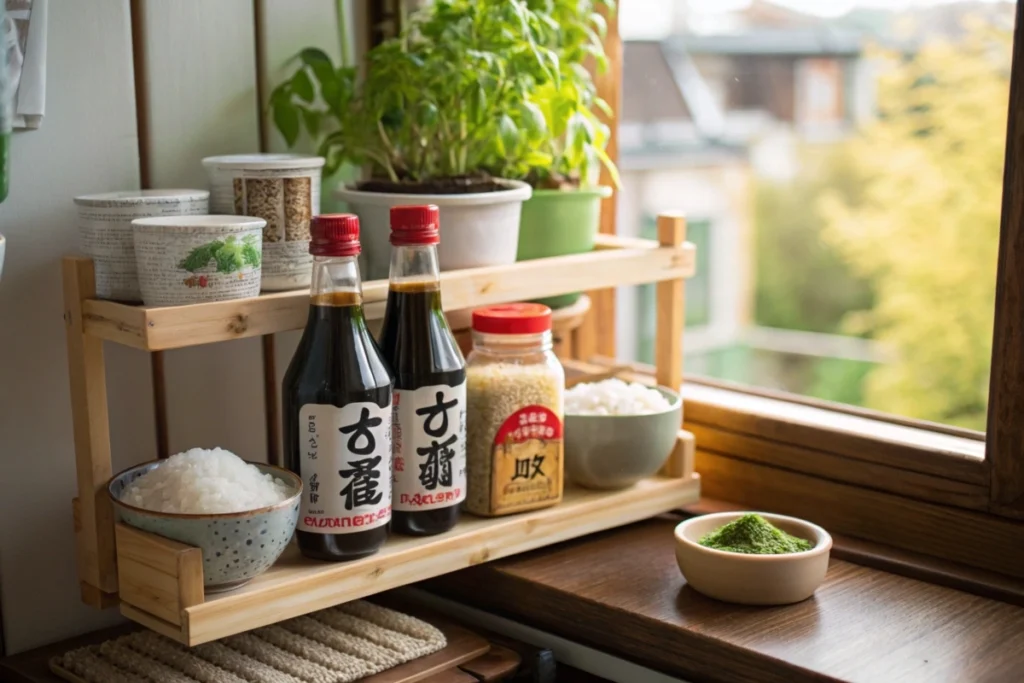Introduction
Have you ever wondered where else can fake japanese food be found beyond the restaurants of Tokyo or Osaka? Sampuru—the Japanese term for highly realistic fake plastic food—is much more than just an eye-catching display. In Japan, these displays help customers quickly recognize menu items, bridging language barriers and enticing diners to walk in and place an order. Yet the popularity of this intriguing art form has spread well beyond Japan’s borders.
From the bustling streets of New York City to themed cafes in Singapore, you can now see Japanese fake food in multiple corners of the globe. In many cases, these plastic displays serve as both marketing tools and fascinating cultural symbols. Tourists snap photos of sushi that looks real enough to eat, while restaurant owners use them to highlight their most iconic dishes. As sampuru gains global fame, people continue to ask how and why this culinary illusion has captured the world’s imagination.
In this comprehensive guide, we’ll explore the far-reaching presence of fake food japanese replicas, their origins, and future trends. Along the way, we’ll also delve into questions like sustainability and authenticity. If all this talk about Japanese food piques your curiosity, don’t forget to explore basic Japanese recipes to try at home.
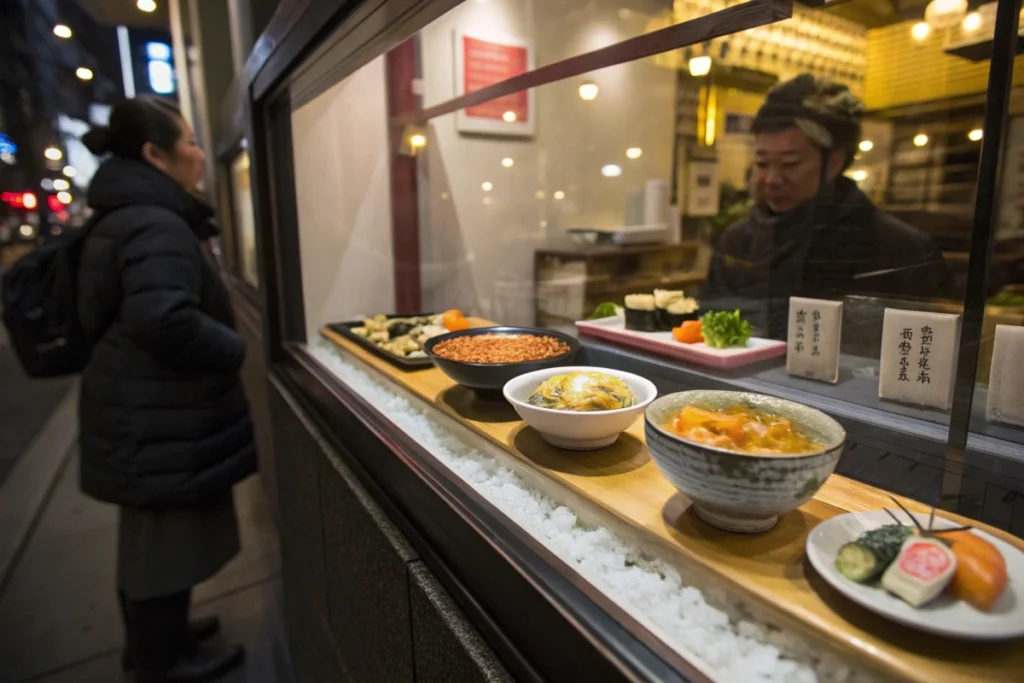
1. What Is Sampuru and Why Is It Popular?
The term sampuru comes from the English word “sample,” but in Japan, it has evolved to mean so much more. Sampuru typically refers to hyper-realistic models of dishes made from wax, resin, or plastic. These models first gained traction in the early 20th century as a way for restaurants to showcase their menus in a visually appealing manner. Before long, japanese fake food became an art form, with skilled artisans painstakingly crafting each piece by hand to accurately mimic everything from sushi rice texture to glistening sauce droplets.
Practical Purposes
One reason fake food japanese displays caught on so swiftly is the practicality they offer to both restaurant owners and diners. If you can’t read Japanese, pointing to a lifelike model solves the language barrier immediately. This ensures accurate orders, minimizes confusion for foreigners, and speeds up the dining process. Over time, local Japanese customers also grew fond of these displays, using them as a quick reference to see what a dish looks like before ordering.
Artistic Value
Beyond their functionality, sampuru creations have artistic merit. Some of Japan’s top fake-food craftsmen go through apprenticeships, learning how to blend colors, carve shapes, and mold materials in ways that replicate nature. The best artisans can even capture subtle details like steam rising off a hot bowl of soup—using translucent resins and thoughtful shading.
Shifting Toward International Demand
As tourists came to Japan, they were often captivated by these displays, leading to a spike in global interest. Many visitors buy mini-replica keychains or magnets as souvenirs—mini bowls of ramen or slices of strawberry shortcake. Realizing the potential, artisans began exporting their craft, fulfilling orders for Japanese-themed restaurants abroad.
The Future of Sampuru
Today, fake plastic food is not limited to Japan. It’s found in major U.S. cities like Los Angeles and Chicago, where Japanese dining scenes are booming. European capitals, too, have begun displaying these mesmerizing replicas, reflecting global curiosity in Japan’s attention to detail.
If you’re intrigued by the world of fake food japanese, you might also enjoy indulging in sweet treats from the real Japanese culinary world. Learn about Japanese desserts and compare their appearance to your favorite sampuru creations!
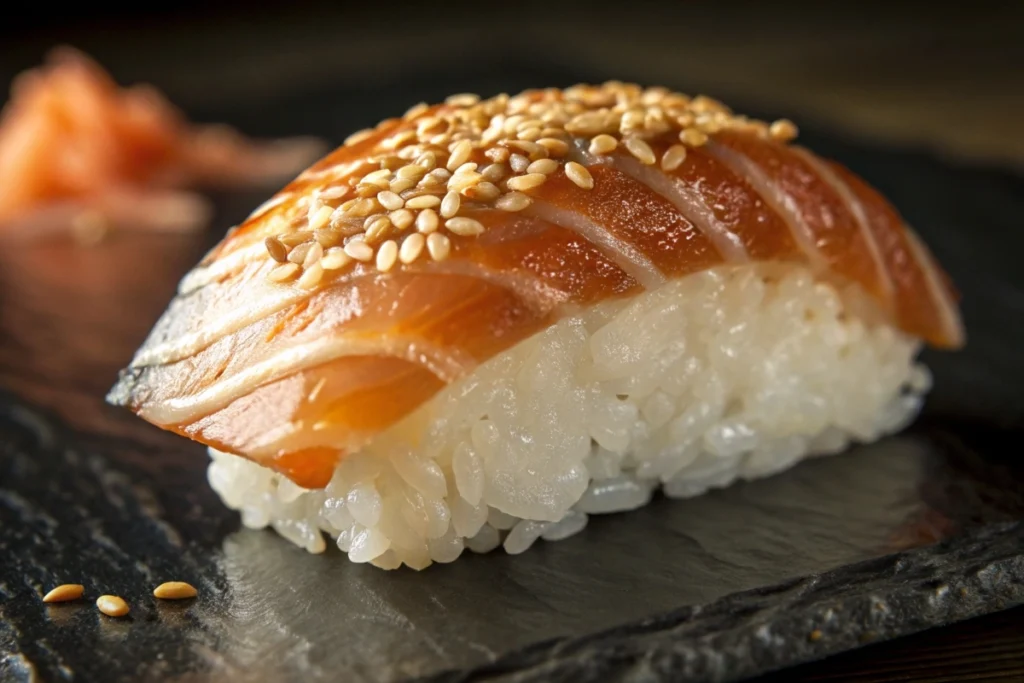
2. Global Locations Showcasing Japanese Fake Food
While Japan remains the epicenter of sampuru, you might be surprised at where else can fake japanese food be found. Thanks to increasing global awareness of Japanese cuisine, restaurants worldwide are adopting these eye-catching displays to entice customers. Let’s take a tour of some international hot spots.
Asian Hot Spots
Countries across Asia, especially in bustling food destinations like Taiwan and Singapore, have embraced fake plastic food displays. In modern shopping centers, you’ll see ramen bowls and bubble tea models displayed side by side. These replicas help multi-lingual crowds quickly identify dishes. Some malls even host entire exhibitions dedicated to the art of japanese fake food, drawing in curious visitors who want to snap photos of near-identical versions of famous local eats.
North America
Cities like Los Angeles and New York boast a sizable Japanese population and a robust appetite for sushi and ramen. Consequently, fake food japanese displays appear in high-traffic tourist areas—especially near Little Tokyo in L.A. or in Japanese-themed spots around Manhattan. For some restaurants, having a full window of glossy sushi replicas is a marketing strategy that sparks conversation and social media shares. The phenomenon also extends to food trucks that occasionally feature mini plastic versions of their top-selling items on countertops.
Europe
In places like Paris, London, and Berlin, sushi bars and ramen shops increasingly use sampuru to stand out. Tourists and locals who might be less familiar with Japanese dish names appreciate seeing a physical model rather than relying on textual descriptions. This can be especially useful in tourist-heavy areas, where communication can be an issue. Ironically, the presence of fake food has become an authentic representation of Japanese culture abroad.
South America and Beyond
From São Paulo to Melbourne, where else can fake japanese food be found? The answer is almost everywhere Japanese cuisine has a foothold. Large expat communities, along with global interest in health-conscious dining, have led to the proliferation of Japanese restaurants. While not as common as in Asia or North America, fake plastic food is slowly creeping into these markets, piquing the interest of local diners.
Want to explore real Japanese recipes loved around the globe? Discover Japanese recipes worldwide and see how these dishes might look in both edible and replica form.
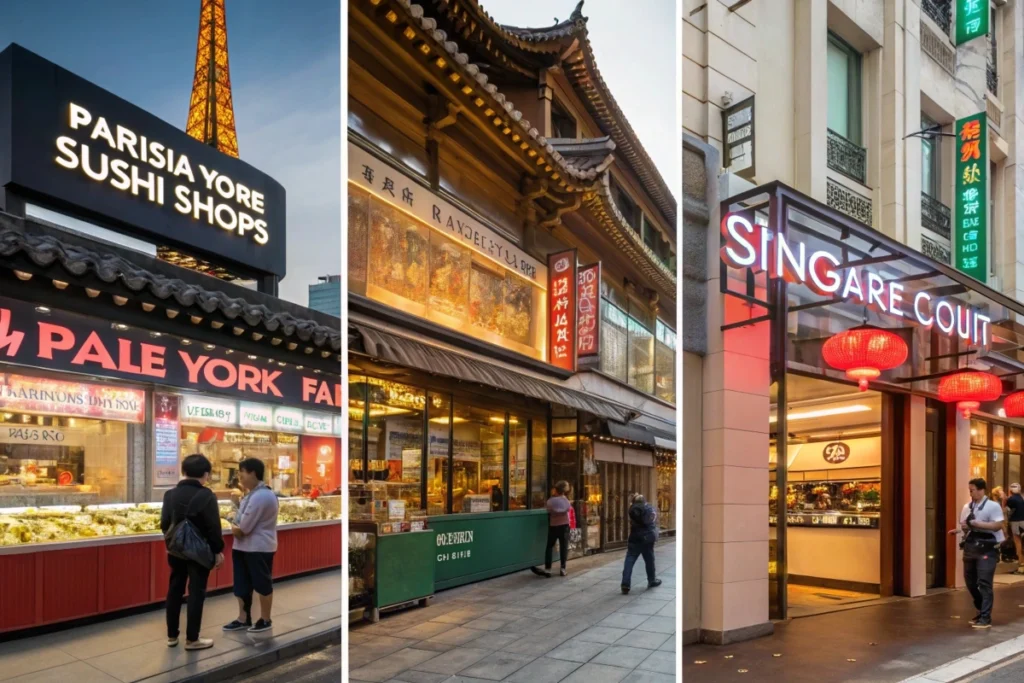
3. Innovative Uses: Beyond Restaurant Displays
By now, it’s clear that fake food japanese serves more than just a restaurant’s marketing needs. Artisans and entrepreneurs are finding innovative ways to adapt sampuru for various purposes, further fueling the interest in where else can fake japanese food be found.
Souvenirs and Fashion
Many visitors to Japan pick up mini replicas shaped like sushi or ramen as quirky souvenirs. Keychains, magnets, and phone charms featuring tiny plastic dishes are particularly popular. In recent years, some designers have even incorporated fake plastic food elements into fashion accessories—like earrings resembling tempura shrimp or bracelets designed to look like sushi rolls. This playful approach merges pop culture with craft, turning sampuru into wearable art.
Art Installations
Museums and galleries occasionally showcase large-scale art installations involving japanese fake food. These exhibits might explore themes like consumerism, food waste, or cultural exchange. Some artists use jumbo-sized replicas of everyday dishes to prompt reflection on the nature of reality and representation. This crossover between art and commerce reflects sampuru’s versatility as both a functional and symbolic medium.
Household Items and Novelty Gifts
Did you know you can buy Japanese fake food shampoo bottles shaped like soy sauce containers or miso soup bowls? While it might seem odd at first, these novelty items exemplify how fake plastic food has invaded the home goods market. From decorative fridge magnets to whimsical salt and pepper shakers, these items can bring a touch of Japan’s imaginative spirit into any kitchen or bathroom.
Educational Tools
Cooking schools and culinary institutes sometimes use sampuru to teach plating and garnish techniques without wasting real ingredients. Aspiring chefs can practice arranging components on a plate or identify different cuts of fish by examining the replicas. This approach emphasizes sustainability and cost-effectiveness, making it an appealing option for educational institutions.
If you’re itching to create your own mini masterpiece, check out fake-food kits for fun crafts and try your hand at painting the perfect tempura shrimp. These kits can also double as unique gifts for food lovers and DIY enthusiasts.
4. Advantages and Disadvantages of Fake Japanese Food
Like any phenomenon that merges art, commerce, and cultural practices, sampuru has its pros and cons. Understanding these can illuminate why the question, where else can fake japanese food be found, is still so relevant today.
Advantages
- Clear Visual Communication: The main benefit of fake food japanese is clarity. Tourists and locals can instantly see what’s on offer, eliminating language barriers or confusing menu descriptions.
- Marketing Appeal: A visually striking window display can draw in foot traffic. People are curious about hyper-realistic sushi rolls or glistening bowls of ramen, so these replicas often function as conversation starters.
- Durability and Reusability: Unlike real food, fake plastic food doesn’t spoil or require refrigeration. Restaurants can display it all day, reuse it season after season, and only update it when the menu changes.
- Educational Value: As mentioned, replicas can assist cooking schools, demonstration events, and even museum exhibits, effectively teaching or illustrating different dishes without any waste.
Disadvantages
- Environmental Concerns: Most sampuru is made from plastic or resin. Disposing of outdated models can contribute to plastic waste. While some artisans use more eco-friendly materials, the majority still rely on traditional, less sustainable substances.
- Cost: High-quality fake food japanese pieces can be expensive, especially those made by master artisans. Not all small restaurants or businesses can afford elaborate displays.
- Potential Cultural Misrepresentation: In some cases, fake plastic food can perpetuate stereotypes or oversimplify culinary traditions. Tourists might form an incomplete understanding of Japanese cuisine if they rely solely on replicas.
- Authenticity Debate: Some purists argue that pictures or digital screens should replace plastic replicas, which they feel detract from authenticity. Others see sampuru as an integral part of modern Japanese dining culture.
Despite these drawbacks, the global fascination with sampuru remains strong. For a deeper dive into cultural phenomena and unique experiences worldwide, you might explore resources like Atlas Obscura, which often showcases hidden gems and behind-the-scenes stories of intriguing global topics.
5. Future Trends and Global Expansion
As we envision the future of japanese fake food, it’s worth noting how rapidly technology and sustainability concerns are reshaping many industries. The question, where else can fake japanese food be found, may soon yield even more surprising answers as artisans adapt to modern demands.
Tech-Forward Replicas
In Japan, some innovators are integrating LED lights or even micro-projection elements into fake plastic food. Imagine a model of sushi that glows to indicate spice level or a ramen bowl that shows steam effects through mini-projectors. While these advanced replicas might be costly, they could greatly enhance the “wow” factor for high-end or concept restaurants.
Eco-Friendly Materials
As environmental awareness grows, we can expect a push toward biodegradable or recyclable materials in the creation of sampuru. Some craftsmen already experiment with organic resins derived from plant-based components. Although these new materials may not perfectly match the durability of traditional plastics, they demonstrate a commitment to minimizing ecological footprint.
Virtual Reality and Augmented Reality
Could we see a future where restaurants forgo physical displays in favor of AR or VR menus? Customers might don AR glasses to see 3D images of each dish hovering above their table. While physical displays are unlikely to vanish entirely—due to their tactile and aesthetic appeal—these digital technologies could complement or even replace certain aspects of fake food.
Cultural Events and Tourism
Large events, such as food expos or cultural festivals, already feature live sampuru demonstrations. In the future, these gatherings may expand internationally, showcasing Japanese craftsmen traveling to global destinations for on-site demonstrations. This cultural exchange can further enrich local communities while spreading knowledge of fake food japanese beyond traditional restaurants.
Bridging Physical and Digital
One potential direction is the use of QR codes alongside fake plastic food. When scanned, the code might reveal nutritional information, cooking videos, or even a link to an online store. Restaurants could integrate these aspects to provide an interactive, modern dining experience while retaining the charm of a physical display.
In an era of globalization, it seems inevitable that sampuru will continue to evolve and spread. As it does, we can appreciate how this unique art form offers a glimpse into Japan’s commitment to craftsmanship, innovation, and hospitality.
History and Context of Fake Japanese Food
To understand where else can fake japanese food be found, it helps to trace how these realistic replicas came about in the first place. The history of sampuru dates back to Japan’s early 20th century, around the time Western influences and modernization were accelerating. Restaurants in urban centers such as Tokyo and Osaka needed an efficient way to attract customers—even those who couldn’t read complex Japanese menus or foreign characters.
Early Wax Models
Initially, artisans worked with wax, melting and coloring it to mimic real dishes. These wax models were prone to melting under hot temperatures or losing shape over time. Still, they served their purpose well enough for restaurants to line their windows with vivid replicas of popular meals, from tempura and sushi to tonkatsu (fried pork cutlet).
Post-War Boom
During the post-war reconstruction era, Japan’s culinary scene exploded. More eateries popped up, and so did the demand for high-quality, long-lasting food displays. This led to the gradual shift from wax to plastics and resins. These sturdier materials could handle heat better and maintain lifelike colors longer. Artisans also began honing their craft, paying painstaking attention to details like the sheen of fresh fish or the translucence of noodles.
Birth of an Art Form
By the 1960s and 1970s, fake food japanese had become a full-fledged industry. Companies specialized in producing elaborate displays, and craftspeople refined their techniques to near perfection. Soon, entire districts—such as Tokyo’s Kappabashi—became known for selling sampuru not just to restaurants, but also to curious tourists.
Present Day Innovations
In recent decades, new technology has enabled even greater realism. Vibrant dyes, 3D printing, and LED accents push the boundaries of what can be achieved in a plastic replica. Additionally, cultural interest from abroad has fueled the export of these displays. Museums and art galleries sometimes exhibit sampuru as a cultural artifact, acknowledging its significance in Japan’s modern history.
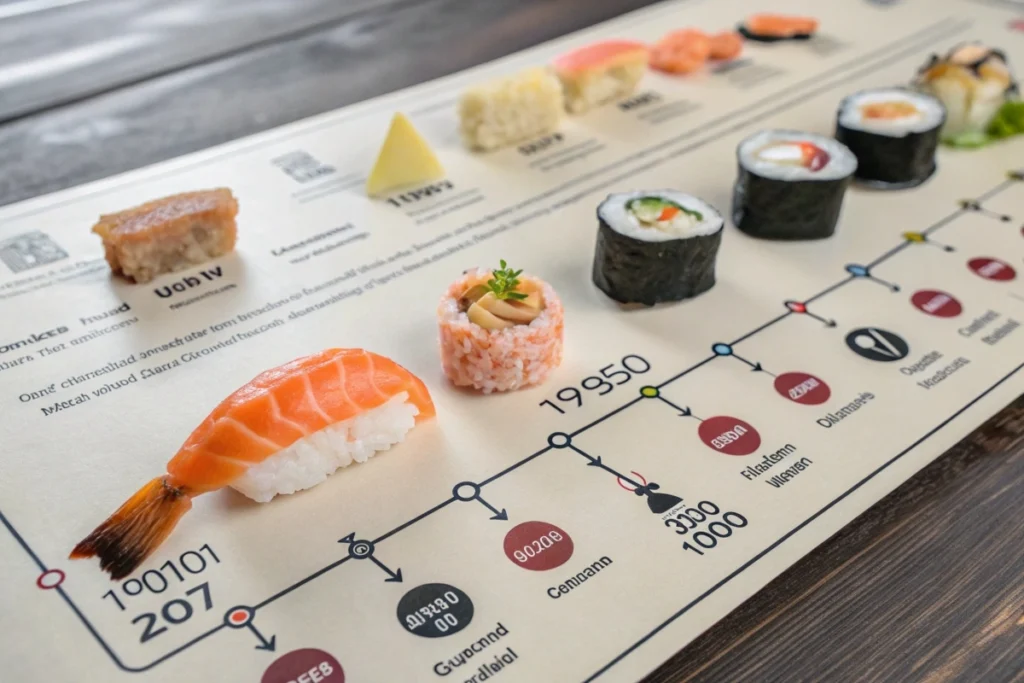
Practical Examples and Use Cases
Wondering how fake plastic food thrives outside of Japan and where else can fake japanese food be found in everyday scenarios? Below are some real-life examples that highlight the versatility of sampuru.
Scenario 1: International Restaurant Launch
Imagine a new Japanese fusion restaurant opening in Chicago. The owners want to stand out from the crowd. They commission a set of fake food japanese models, including colorful sushi rolls and a signature ramen bowl. Displayed prominently in the window, these replicas catch pedestrians’ attention, prompting them to step in and give the menu a try. Over time, the novelty of the display generates social media buzz, as customers post pictures of the hyper-realistic ramen on Instagram.
Scenario 2: Tourist Souvenir Shops
In places like Hawaii or Vancouver, where Japanese cultural influence is noticeable, gift shops often sell miniature fake food items—keychains, magnets, or phone cases shaped like bento boxes. Visitors snap them up as a quirky memento. They then show these souvenirs to friends back home, fueling curiosity about Japan’s unique artistry. Some end up ordering full-sized sampuru pieces online to decorate their kitchens or living rooms.
Scenario 3: Educational Cooking Demonstrations
Culinary schools in Australia sometimes incorporate fake plastic food into demonstration areas. This allows instructors to set up consistent displays for practice sessions, letting students see exactly how a dish should look in terms of plating and portions. Because the replicas don’t wilt or spoil, they’re ideal for repeated lessons. This approach can also reduce food waste, a key concern in large-scale culinary programs.
Such scenarios highlight the broad appeal of sampuru, transcending cultural boundaries. Looking for other unique Japanese ideas to add excitement to your home cooking repertoire? Try an authentic main dish like Japanese steak or even a comforting curry recipe inspired by pop culture (Japanese curry recipe one piece) to match your fake food décor with a real culinary experience!
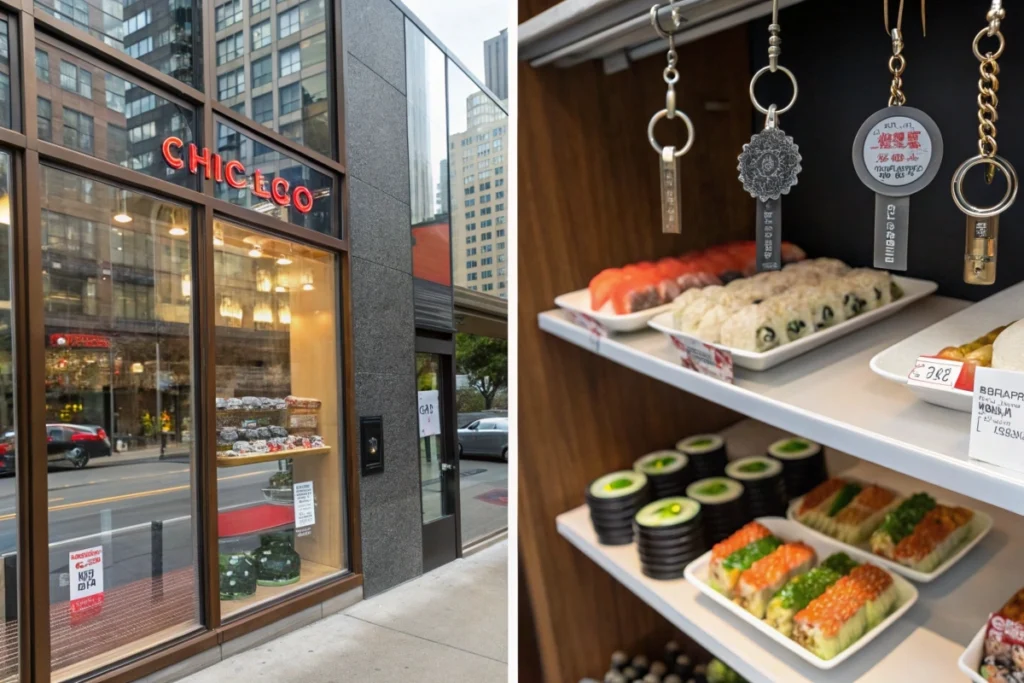
FAQs
Below, we answer common questions related to where else can fake japanese food be found and the art of fake plastic food.
What is the fake food in Japan called?
Japanese fake food is widely known as sampuru, derived from the English word “sample.” It encompasses a wide range of meticulously crafted replicas, from sushi and ramen to parfaits and shaved ice.
Where does fake food come from?
Most fake food japanese displays originate in specialized workshops throughout Japan. Skilled artisans use plastics, resins, and advanced painting techniques. However, as global demand grows, some replicas are also produced in other countries under the guidance of Japanese experts.
Does Japan have non-Japanese food?
Absolutely. Japan offers an extensive global cuisine scene, featuring everything from French bakeries to Italian pizzerias. You can also find replicas of Western dishes—like spaghetti or steaks—displayed in Japanese restaurants that serve international fare.
What is the Japanese art of making fake food?
The craft is often referred to as “the art of sampuru.” It involves sculpting, molding, and painting plastic or resin to replicate the exact appearance of real dishes. Artisans study real food carefully to achieve realistic textures and colors.
Is there a place focusing on japanese fake food shampoo or other novelty products?
Novelty shops throughout Japan offer playful items like shampoo bottles designed to resemble soy sauce or miso soup containers. These products can also occasionally be found in Asian grocery stores abroad or specialized online retailers.
Can I order fake Japanese food displays for my own restaurant or personal collection?
Yes, many companies accept custom orders, allowing you to specify dish type, portion size, and even how glistening you want the sauce. Some businesses also sell pre-made sets suitable for immediate use or display.
How does fake plastic food differ from real photographs on menus?
Physical replicas allow customers to view dishes from different angles and see 3D textures. Photographs, while common, can be less engaging and might not always convey the portion size accurately.
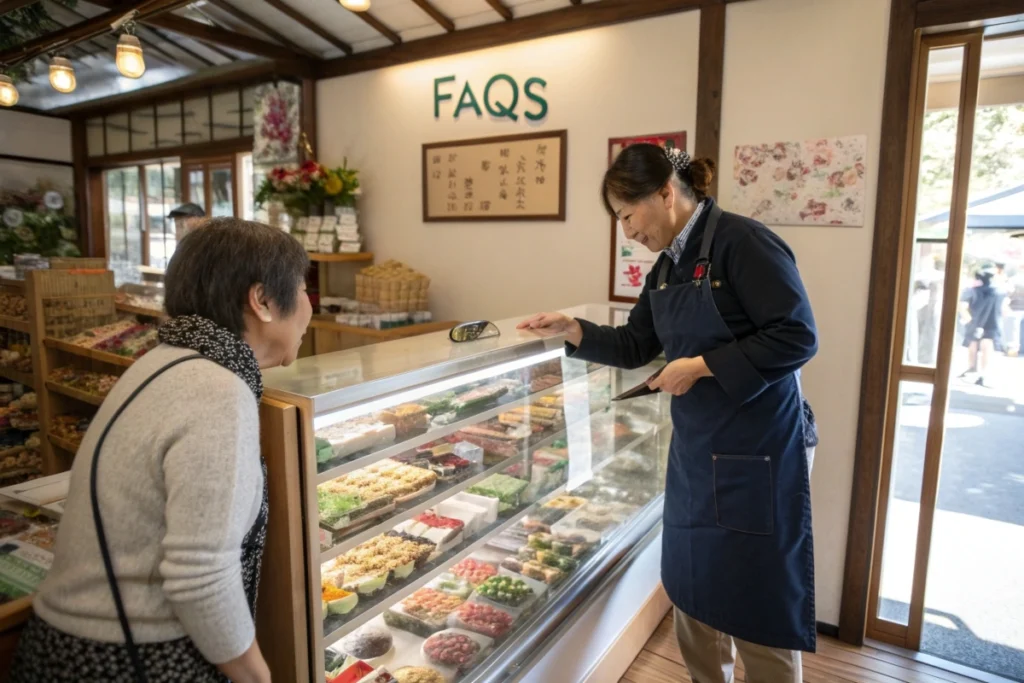
Conclusion
The global reach of sampuru proves that the question, where else can fake japanese food be found, has countless answers. From chic European sushi bars to cozy family restaurants in North America, these realistic displays both captivate and inform. Far from being mere novelties, they represent a unique blend of art, tradition, and commerce that reflects Japan’s meticulous approach to detail and presentation.
If you’ve been intrigued by the vibrant world of fake plastic food, remember that there’s an equally exciting realm of real Japanese cuisine awaiting discovery. You can transform your kitchen into a mini izakaya by trying recipes like Japanese steak or indulging in sweet treats from Japanese sweets recipes. Meanwhile, the sampuru phenomenon continues to evolve—branching into merchandise, art installations, and maybe even digital or augmented displays in the years ahead.
As you explore these innovations, take a moment to appreciate the artistry and practicality behind each fake dish. Chances are, wherever Japanese food culture travels, those delightfully lifelike replicas won’t be far behind.
